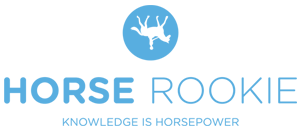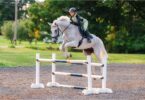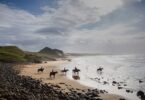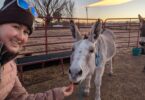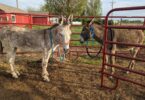Learning About Learning With Clickers
Last weekend I had my first foray into the world of clicker training with the amazing Georgia Bruce of Click with Horses. I think it’s safe to say that with the change I’ve already seen in Nonie, I won’t be looking back.
Getting There
On Friday afternoon I made my way up to Pamela Kingwill’s beautiful facilities in Bowen (North East coast of Queensland, AU). Ambition (Book 1 in the Eventing Series) by Natalie Keller Reinert was my soundtrack on the three hour drive, which was fortunately uneventful.

After settling Nonie in, I made a dash to the shops in town to get a pillow, which I realised I had forgotten to pack. As I was driving into town, the skies opened up and I suddenly remembered that my float (where I would be sleeping) was not entirely waterproof. Ack! The rain was short lived and stayed away for most of the weekend, however, leaving me with a blissfully dry bed.
I’d decided that I would take Nonie out for a stretch that afternoon. When I returned, Morgen, a friend who lives in the area and was attending the clinic as well, was saddling her horse up to do the same thing. Morgen’s horse Kent is also at medium level, and like me, this was her first time riding at this level. It was really reassuring that we were facing similar struggles and doubts.
I must have been pretty excited to get stuck into learning, because on Friday night I just could not get to sleep. Nonetheless when my alarm went off at the leisurely hour of 6am, I was happy to get out of bed in the blissful cool of the morning and give my pony a hug. This has always been one of my favourite aspects of travelling away with horses—so much extra pony time!
Day 1 Clicker Training Clinic
The morning half of the clinic was dedicated to better understanding how our horses learn. It struck me as slightly odd that although I’ve ridden for about 20 years, I’ve never been taught this (or sought it out myself). We then moved onto the theory behind clicker training, like the different ways of teaching behaviours such as capturing, gentle pressure release, and shaping.
Then Georgia called for a volunteer, to demonstrate the principles of clicker training on. After having been assured that the volunteer’s efforts would be rewarded with chocolate (a Fantale), I willingly nominated myself.
This was such a beneficial learning experience for me. It really helped to give me insight to understand what it’s like from my horse’s perspective. I went away from the group and covered my ears while they decided upon the behaviour that they were going to teach me. I was then summoned back to the group and after brushing some hair behind my ear I quickly received my first click and words of praise. So I put my hand up to my ear again. Another click! Again hand to ear, click, words of praise.
Georgia then went and got a Fantale and I was pretty pleased with myself—I’d got the behaviour pretty quickly! But Georgia lifted the Fantale up above her head. Up my hand shot. Click! Then she took the Fantale away and I put my hand up again. Click. Hand up. Click. This was a really useful demonstration of capturing and shaping.
After a few people did this we filled our bum bags (that’s a fanny pack for any of my US readers) with treats, clickers in hand and went about teaching our horse how to take food in a respectful manner. This is one of the fundamentals of effective clicker training. And honestly, I was a little worried that Nonie and I would stumble at this first hurdle. Nonie is extremely food orientated and can become slightly over excited in the presence of her favourite treats.
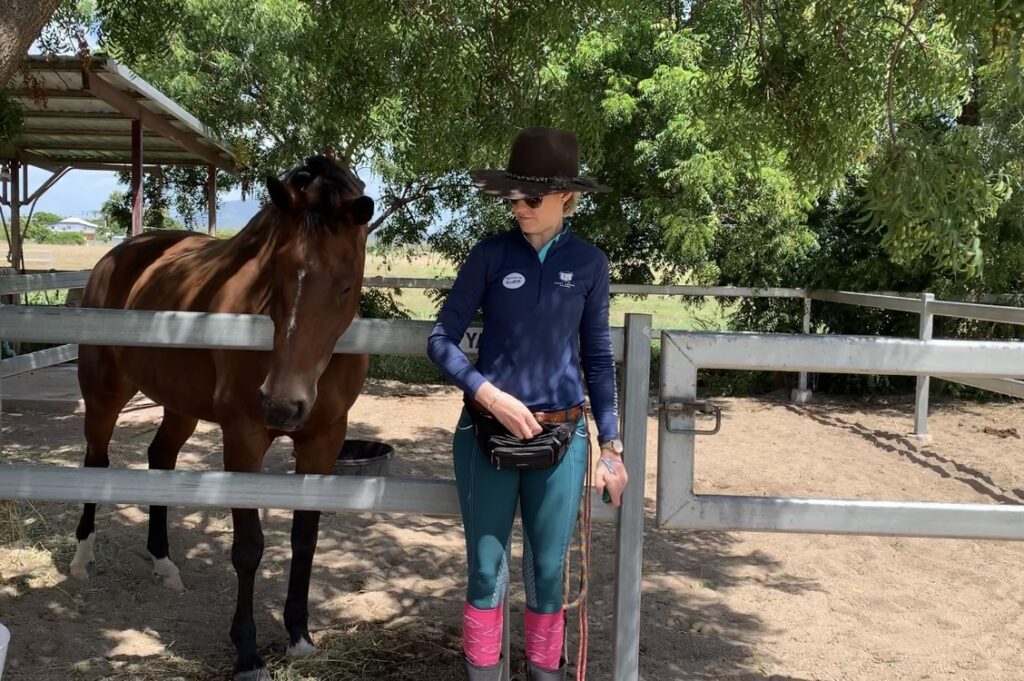
I needn’t have worried though. Because this is exactly why you teach the horse to take the treats properly. That is you want the horse to look away from you slightly no matter which side you are standing on, rather than allowing them to mob you.
Once we all had this down pat we moved out to the arena and taught our horses to back up to a light pressure, drop their heads and stand still (or park). In the afternoon we moved on to targeting – where you teach the horse to touch an object with their nose. We also taught our horses to keep their heads nicely still whilst we put our hands all over their faces.
Now some of these things may seem quite basic, and sure, mostly the horses all picked it up fairly quickly, but think about the practical applications. How many times has your horse shifted around while they are being shod? Can you easily open your horse’s eyelids to put ointment in them? Will they stand nicely in cross ties if you walk away to grab something you forgot, or to run to the loo?
Day 2 Clicker Training Clinic
Day 2 dawned clear and cool—another brilliant day for learning! I was thrilled to see that Nonie had all but demolished her dinner and the two hay bags I’d left out for her the previous night. This was despite receiving more than her fair share of treats the previous day. Over the last few years Nonie’s picking eating habits whilst travelling have been a source of some stress. I feel as though I am starting to crack the code, however, on how to keep her comfortable.
We started off the day with some more learning theory. Once again, I can only say how incredibly helpful this was in giving me a better understanding of how our horses interpret the world and our actions.
We then went on to learn about how to desensitise horses. We filled the arena with everything from basketballs, to pool noodles, to gym balls and even a very creative ribbon banner. Nonie is generally pretty accepting of these types of things, having been exposed to a wide variety of them over the years. She was very happy to walk up to touch them and hang around for a while afterwards too.
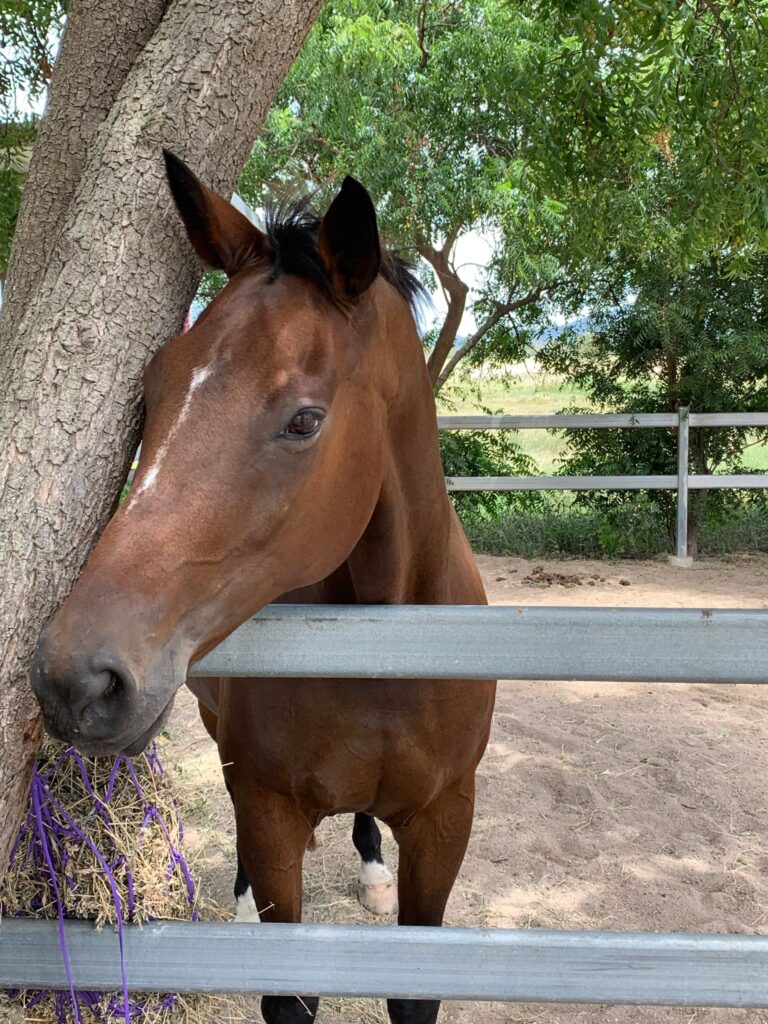
Lots of clicks and treats for Nonie!
After a quick morning tea break, we had a look at the final exercises that Georgia considers to be essential for clicker training. It was teaching our horses how to yield the quarters, shoulders, and lateral flexions. And this was where Nonie started to find things a bit tricky! While I have fairly good control over these things in the saddle, ground work is something I have neglected somewhat. But she was quick to pick up what I was asking of her and was getting more and more bend through her neck. This particular exercise should prove useful as it is a stretch that I am meant to do with Nonie daily and normally require carrots to do it.
With both horses and handlers being on information-overload, Georgia dismissed us for a long lunch.
Let’s Relax, Then Ride Into The Sunset
My friend Sarah decided this was the perfect opportunity to whisk me off for lunch at a café by the beach. It has to be said that the beaches in Bowen are truly stunning. And the food at this café was delicious.
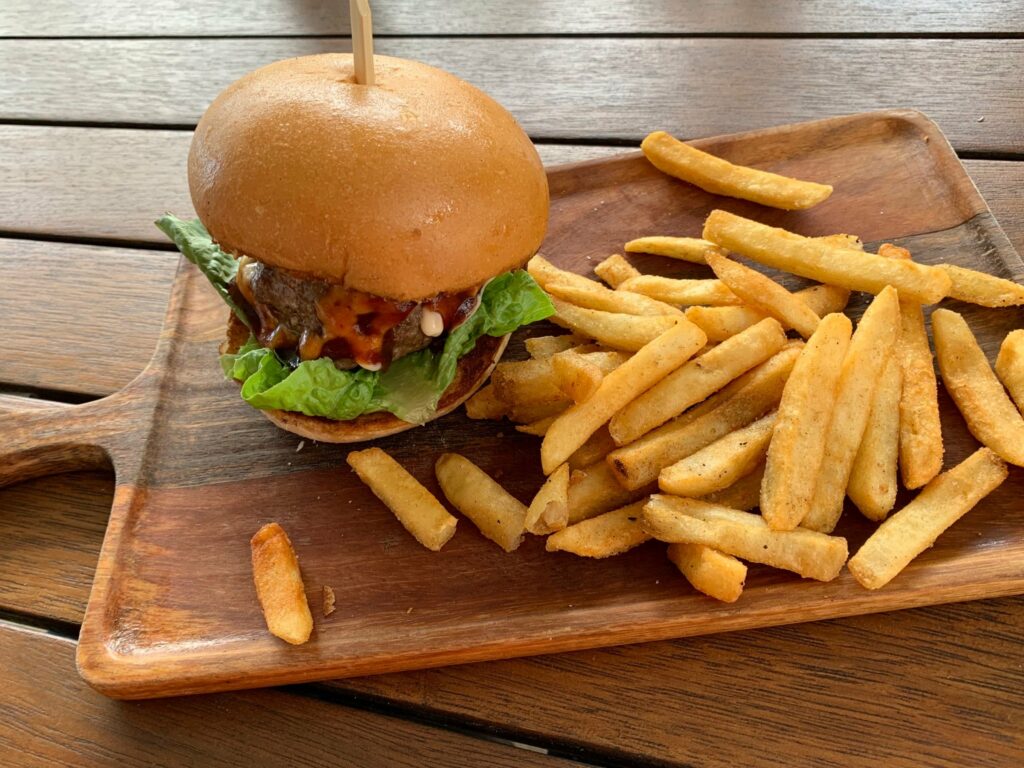
After lunch those of us who wanted to had the opportunity to introduce the clicker under saddle. I jumped at this opportunity. Having thought about our weaknesses the previous night, I already had a bit of a plan about how I wanted to use the clicker under saddle.
I explained to Georgia that where Nonie and I really struggle is with the lateral flexion in the lateral work. I was planning to go back a few steps and use the clicker to mark a few good steps of bend and then build this back up. With Georgia’s approval we got underway. Now I am not sure if it was that I was clearer on exactly what I wanted from Nonie, or whether I was looking for the positives, or whether Nonie really responded to the click-treat cycle, but I felt that we were both more relaxed and happy in our work.
A huge thank you to Pamela for hosting us and organising the clinic. If you have the opportunity to learn about clicker training I cannot recommend it enough.
P.S. Enjoy this article? Trot on over to:
- 6 Easy Clicker Training Exercises for Horses (With Pictures)
- Teach Your Horse to Come When Called (Step by Step)
- Teach a Horse to Stop Grazing While Leading (Step by Step)
- Teach Your Horse to Lie Down on Cue (Step by Step)
- Friendly & Fun: 4 Best Horse Breeds for Beginners
- Fight the Fidget: Teach Your Horse to Stand Still
- 2 Simple Ways to Improve Your Horse Relationship Today
- 32 Things You Can Do Now to Calm Your Riding Nerves Forever
